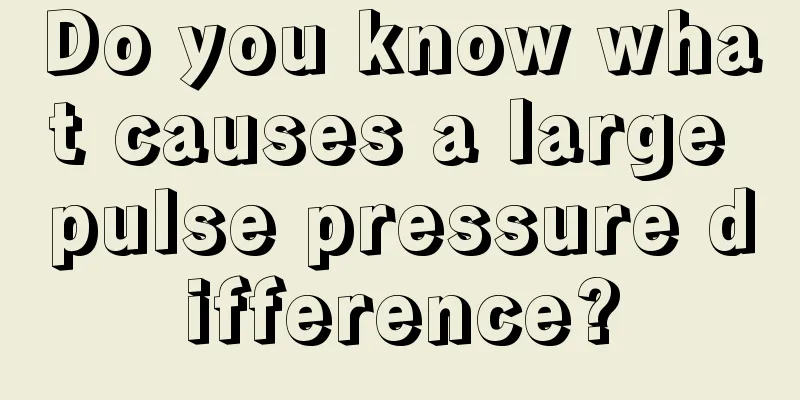Do you know what causes a large pulse pressure difference?

|
When it comes to pulse pressure difference, many people may not know it. It is actually the difference between diastolic pressure and systolic pressure. The pulse pressure difference of a normal person should be 40 mm. Patients with hypertension will generally have a higher value, and patients with low blood pressure will have a lower value than the normal value. If the pulse pressure difference is large, people must understand the cause and treat it. Increased pulse pressure difference is an independent risk factor for cardiovascular and cerebrovascular diseases, and is more common in elderly hypertension with isolated increased systolic blood pressure. Studies have found that for every 10 mmHg increase in pulse pressure, the thickness of the carotid intima-media layer will increase by 0.01 mm, and the risk of carotid artery plaque formation will also increase with the increase in pulse pressure. For example, if the pulse pressure difference is 85 mmHg, the risk of myocardial infarction and stroke will increase by more than 10% compared with that of 65 mmHg. Tip: The greater the pulse pressure difference, the greater the harm to the cardiovascular and cerebrovascular systems. Active intervention is needed and should not be taken lightly. Once an abnormal pulse pressure is found, you should go to the hospital in time to find out the cause and treat the primary disease. The main reasons for excessive pulse pressure difference are: (1) Suffering from hypertension and arteriosclerosis, which causes the elasticity of the arterial wall to weaken, the systolic blood pressure to increase, and the diastolic blood pressure to decrease; (2) Long-term hypertension causes myocardial overload, resulting in heart enlargement or aortic valve insufficiency; (3) Suffering from hyperthyroidism or severe anemia. Usually, when measuring blood pressure, people tend to only pay attention to the level of blood pressure and rarely care about the size of the pulse pressure difference. Little do they know that the size of the pulse pressure difference has important clinical significance. For this special type of hypertensive patients with increased pulse pressure difference, antihypertensive treatment should take into account both moderate reduction of systolic blood pressure and maintenance of a certain mean arterial pressure and diastolic blood pressure. The blood pressure reduction value cannot be generalized or applied in a one-size-fits-all manner. Of course, if there is no concurrent heart, brain, kidney or diabetes disease, it is best to lower blood pressure to 120-140/70-86 mmHg. |
<<: What are the vegetables rich in vitamin D
>>: How to treat heat urticaria?
Recommend
Which should I use first, sunscreen or BB cream?
Sunscreen can block certain ultraviolet rays and ...
How to wash clothes with oil stains
We often encounter oil stains in our daily life. ...
What is head madness
Many people may not have heard of headache. Suffe...
What is the effect of honey fungus concentrate?
Honey fungus is a fungal substance that is widely...
What should I do if the bag zipper is difficult to close?
People usually use all kinds of bags. For example...
Is it OK to swim without goggles?
In the gym, swimming can be said to be a sport th...
How to treat enlarged pores and blackheads
Blackheads and enlarged pores greatly affect one&...
Do you know the differences between tracheitis and bronchitis?
In real life, tracheitis and bronchitis belong to...
Lavender treats insomnia
Insomnia usually occurs in middle-aged and elderl...
The dangers of malnutrition should be noted
Although the living standards are getting better ...
Is keratitis really contagious?
Keratitis is an inflammation caused by viral inva...
What is the reason for stomach bloating and vomiting
Under normal circumstances, we eat three meals a ...
Tips for fast sleep
Nowadays, people often suffer from insomnia due t...
The importance of sun protection
Many friends may think that the purpose of sun pr...
What are the Chinese medicinal herbs for rheumatism
Rheumatic bone pain seriously affects the patient...









